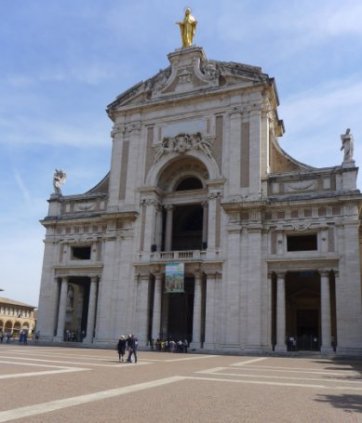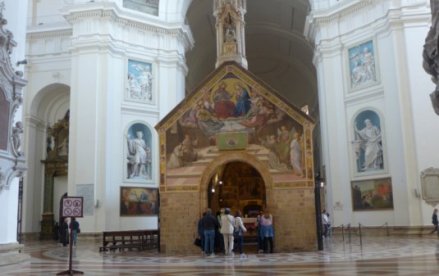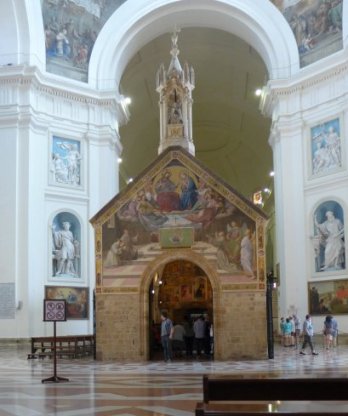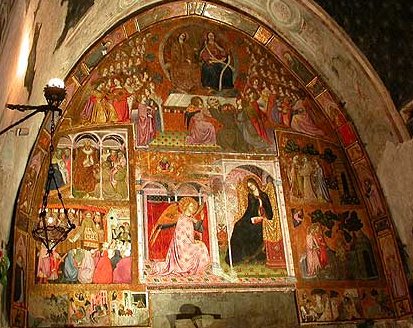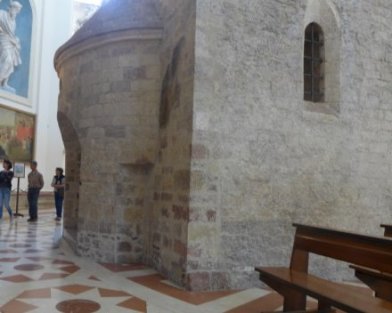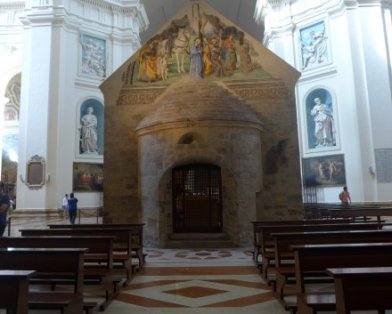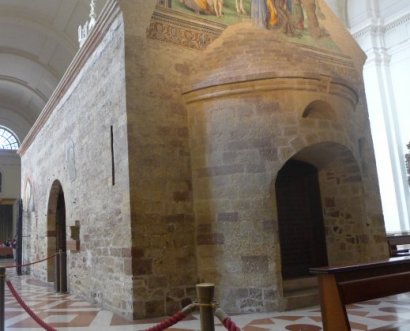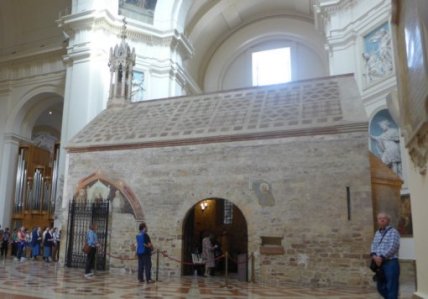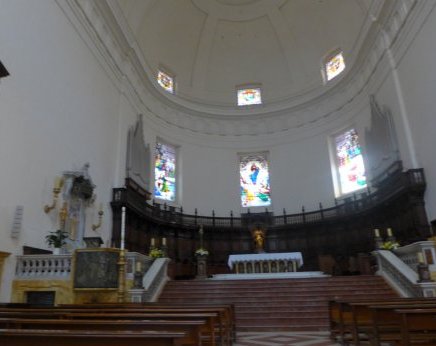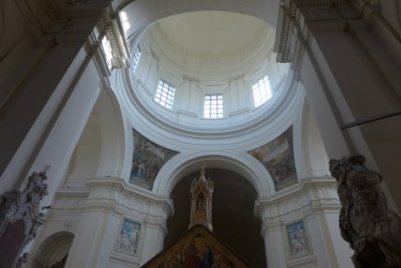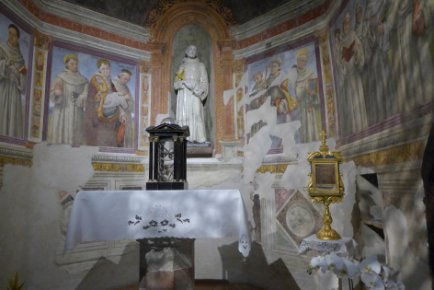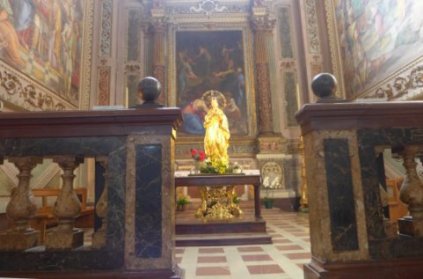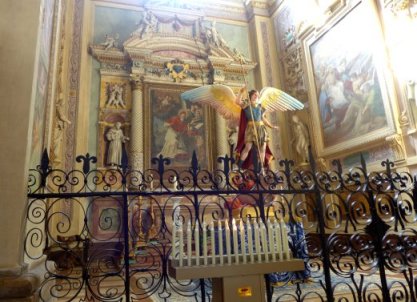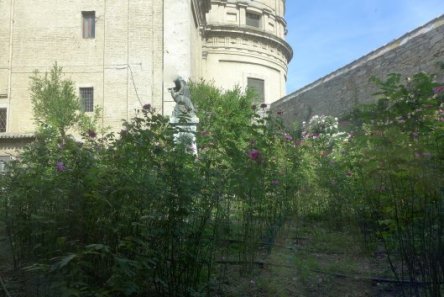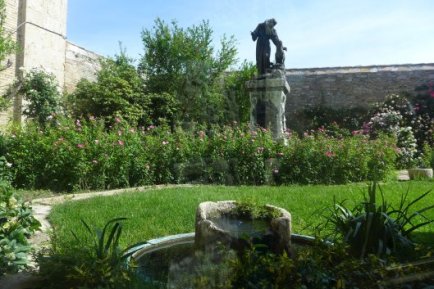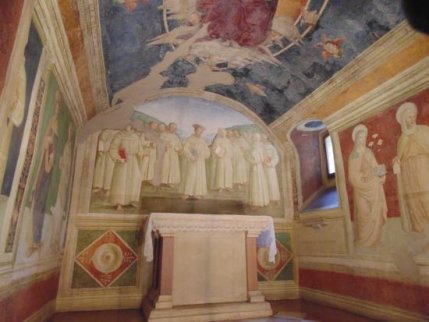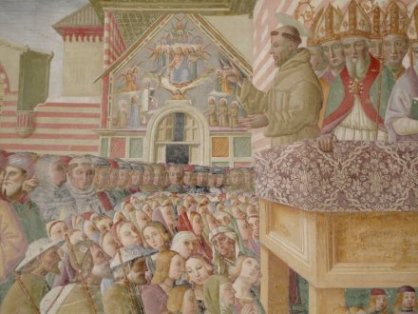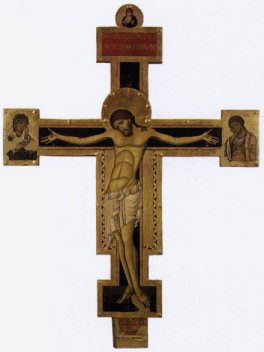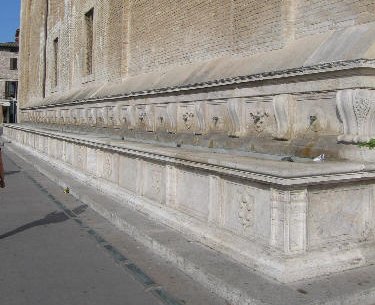|
Santa Maria degli Angeli |
|
| A rather grandiose
affair, much added to, though with a fascinating history and many
interesting things to see. The church is about four kilometres out of
town - it can be reached from Assisi by taxi (around 20 euros) or bus (2
euros.) We taxied there and bussed back. History The little building dwarfed by the church around it is known as the Porziuncola. (The spelling varies somewhat; it means 'small portion of land'). Its foundation dates from the eleventh century; by the time of St Francis it had fallen into disrepair, and following his San Damiano vision he began to rebuild it. The Porziuncola and the forested area around it became the early base for the Franciscans, probably in tents and shacks around the building. St Francis died here in a simple infirmary building; a chapel built on the site of it forms part of the church - the Capella del Transito. After the death of Francis more substantial buildings were erected here, and by the middle of the thirteenth century it became an important pilgrimage destination. Work on the large church we see today began in 1569, though it seems that at the time many of the friars had reservations. Apart from the porziuncola and Transito chapel, everything else had to go, and a great deal of history with it. The church was eventually completed in 1679. Large parts of the building collapsed in the earthquake of 1832 and the building had to be patched up; the present rather bombastic facade was rebuilt in 1928 - 1930. |
|
|
|
|
Porziuncola |
|
|
|
|
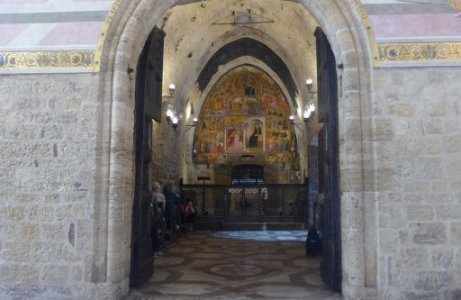 |
|
|
|
|
|
|
|
| Presbytery | |
|
|
|
| Capella del Transito | |
|
|
|
| Chapels | |
|
|
|
| A passageway on the right takes you past the rose garden; here, according to legend, rolled in the thorns to expiate sin. From that moment on the roses grew without thorns. We were unable to check the veracity of this as the garden couldn't be visited. | |
|
|
|
| The corridor continues past the Capella dele Rose. The fresco on the right below gives an impression of the site of the Porziuncola before the building of the church. | |
|
|
|
|
|
|
|
|
|
| Assisi churches page 1 Sacred places home page Home page - explore the site | |
